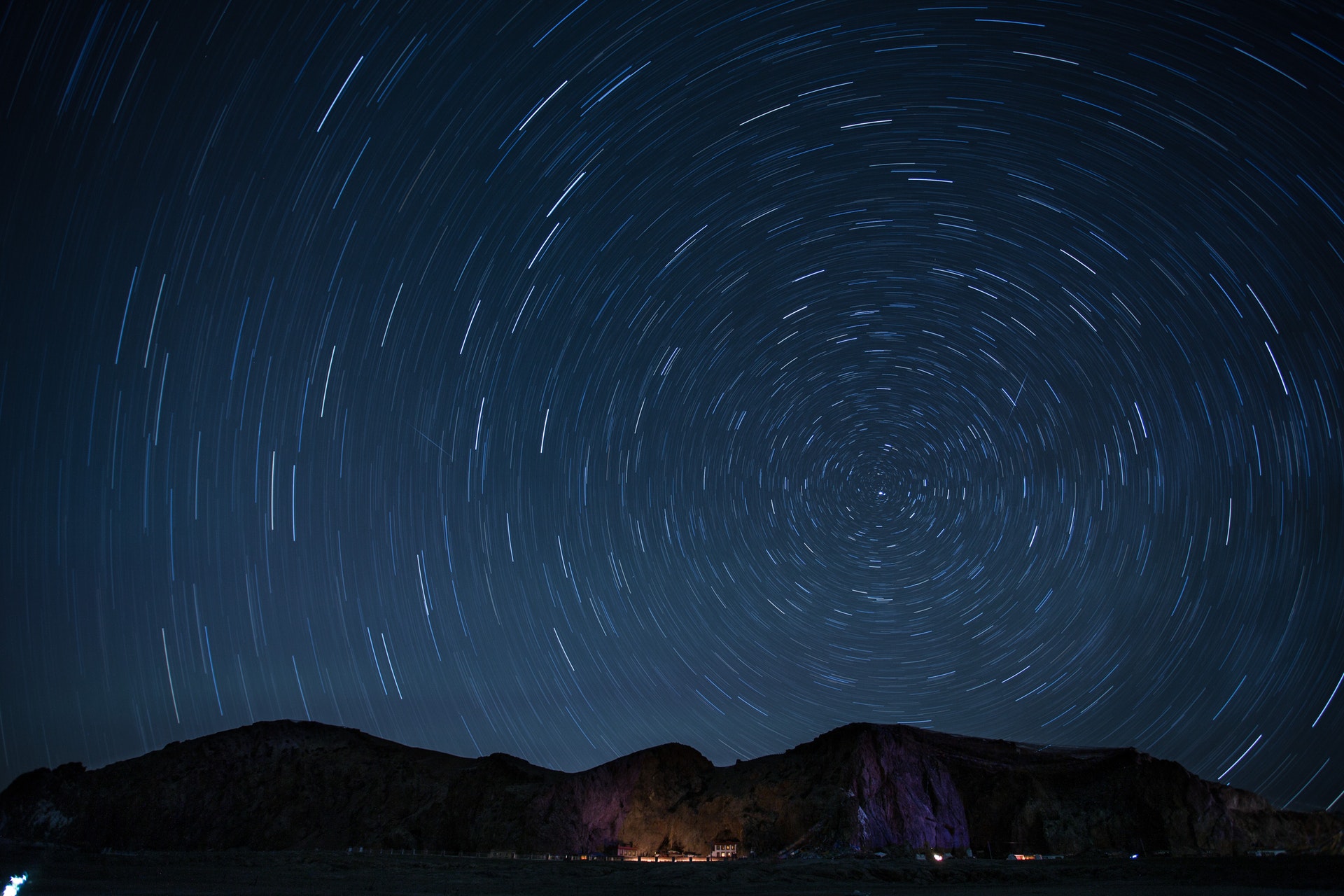Wiccan practice is based on eight solar observances, called Sabbats and known collectively as the Wheel of the Year, and 26 lunar observances, called Esbats, each year. Some people hold very strictly to celebrating the moment, or at least the day, of the observance. Others are more relaxed about the time of the gathering, factoring in considerations like work schedules and weather forecasts. I’m of the opinion that the observance is more important than the timing, but timing that is in keeping with astronomical and astrological events can empower the observance and give practitioners a feeling of connection with the cycles of nature.
The first time I heard about astrological Samhain I was enthralled. I’d always assumed that the calendar date of October 31 was the traditional date of the sabbat. And it was, my teacher told me. The gatherings were held on the calendar date. But the magick of the season, the important spiritual work, was done when the sun was at 15 degrees Scorpio. And the other cross-quarters were the same way.
I’d never read this information in a book. I felt like I was receiving genuine secret knowledge from the tradition’s oral history. And I suppose at that time, that’s exactly what I was receiving. But looking back on the experience now, I think that I might’ve come to the realization myself if I’d been more of an astrologer. The secret knowledge wasn’t really secret. It was just based on a different set of assumptions, assumptions that I was only beginning to learn at that time.
I have learned that there are three calendars that generally affect Wiccan practice: the mundane Gregorian calendar that rules our daily lives, the astrological calendar that governs a lot of magickal practice, and the astronomical calendar that divides the days, moons, and seasons of the year. These three calendars interplay as we decide how to time our celebrations.
Esbats
The full and dark moons, or esbats, are the working times of the coven. Generally, if there is a spell to be done or a process that needs to be worked through, it’s done by the moon. But the exact astronomical time of the full or dark (new) moon can sometimes be in the middle of the day or sometimes in the very depths of the night, so often it’s not practical to time a celebration for the exact hour of the lunar event. What’s a witch to do?
Here are some options: celebrate on the day of, or the sunset before, the astronomical moon. That means if the moon is at 7:15am on a Wednesday, you can celebrate on Wednesday or on Tuesday. Some people follow the three-day-window rule, which states that the full (or dark) moon can be celebrated on the day before, the day of, or the day after the astronomical moon. The visual appearance of the moon in the sky is not significantly changed, and the subtle energies of the moon can be felt with little difference.
In my tradition, the full moon can be celebrated within the three-day window but our preference is to celebrate before the exact time of the full moon in order to harness the waxing energies of the cycle. However, there is a difference between the dark moon and the new moon, and this affects how we observe them. The dark moon is the time where the moon shows no illumination. Astronomically, this is called the new moon, so when you’re looking for the exact time in a data table, look for it under this name. But in my tradition, the new moon occurs at least six hours after the dark moon for magickal purposes and is celebrated at 6% illumination. It’s the time when the barest sliver of a crescent can be made out. Some traditions call this Diana’s Bow. If we’re working a rite of banishing or a magickal operation to lessen the influence of something in our lives, we will time our observation before the dark moon to harness the waning cycle. If we’re working a rite of attracting or a magickal operation to increase the influence of something in our lives, we will time our gathering after the dark moon to harness the waxing cycle. You may find the same guidelines to be helpful for you, but if it’s burdensome in a bad way or isn’t working out for you, then don’t hold it as an immutable rule.
Similarly, if celebrating during the work week is a challenge, then you can celebrate on the Saturday or Sunday closest to the moon. At most this will be four days before or after the moon. If you’re doing a magical working, you can account for the waxing or waning influence of the moon’s cycle on your meeting time as an active part of the spell. Other workings, such as healing cycles or self-improvement, are less dependent on the subtle energies of the moon and more dependent on the human rhythm of meeting once or twice a month.
Above all, don’t agonize too much about the timing of your celebrations. The Charge of the Goddess is to meet once a month. It’s better if the moon is full, but gathering and celebrating the esbats is what’s important.
Sabbats
The eight solar festivals, or sabbats, are times of celebration. Magical workings can and do happen at these times, but they are more often focused on community health, prosperity, and cohesion and the ongoing cycles of time. For example, at Beltaine, a couple may work the Great Rite In Truth to bring fertility to the land, or at Yule, a family may light the Yule log to bring emotional warmth and physical prosperity to their household during the dark time of the year.
All sabbats are governed by solar events: the solstices and equinoxes, or quarters, and the times exactly between these events, or cross-quarters. The sabbats have traditional calendar dates, but they can also be calculated astrologically, as the astrological new year is based on the vernal (spring) equinox. The sun always enters Aries at the exact moment of the vernal equinox and always enters Libra at the exact moment of the autumnal equinox. It always enters Cancer at the exact moment of the summer solstice and always enters Capricorn at the exact moment of the winter solstice.
The cross-quarters differ slightly in timing because they can be calculated in two ways: either the exact clock time between an equinox and solstice (astronomical cross-quarter) or the astrological event that falls halfway between an equinox and solstice (astrological cross-quarter). Personally, I’m not really a fan of the astronomical cross-quarter because it takes a lot of math or some special software to calculate. First, you have to determine the exact amount of time (accounting for daylight saving time if it’s observed where you are) between the equinox and solstice (or solstice and equinox). Then you divide that number in half, then you add the resulting number to the starting equinox or solstice to get the time between it and the next solstice or equinox. Astrological cross-quarters, on the other hand, can be approximated using an ephemeris or aspectarian and can be calculated exactly with astrology software.
Because sabbats are solar festivals, they can be celebrated on the day of the event or the sunset prior. But because they also mark the change of the seasons, they can be celebrated on the weekend before or after the solar event or celebrated over multiple days, such as the span of time between calendar Beltaine and astrological Beltaine or a span of time following Yule (traditionally twelve days). The sabbats can also be observed on their traditional calendar date if that’s what’s most convenient. Again, it’s the observance of the celebration rather than the exact chronological moment of the event that’s most significant in most cases.
Tools of the Trade
If you have one of Llewellyn’s calendars or almanacs, the moon phases and solar milestones will be marked for you. But if you’d prefer to build your own customized calendar, all of the information you need is freely available to you.
The United States Naval Observatory keeps a variety of astronomical data tables, such as sunrise and sunset, moon phases, and solstices and equinoxes, which can be localized for your particular area. It is currently undergoing modernization and will return in May 2020, but most of the information found here can also be found in other places.
TimeAndDate.Com has data tables for sun and moon, outlining rising and setting times as well as moon phases, seasons, eclipse information, and planet rising and setting times.
Astrodienst offers free PDF ephemerides and aspectarians, as well as other types of data tables, in their 9000 Years Ephemeris. They also offer free astrological charts with a variety of customizable features as well as custom ephemerides. Check out the Extended Chart Selections page!
Transit Calendar is a free resource that puts an aspectarian into calendar format. This is particularly useful for checking the astrological forecast for a particular day to avoid unfavorable influences.
The EarthSpirit Community has an almanac in which their resident astrologer has calculated the exact times of the astrological quarters and cross-quarters. We hope they will continue to update this page each year.
The Evening Sky Map is a free PDF publication that gives details about the month’s astronomical events as well as a view of the night sky and observable phenomena. It is useful for integrating skywatching with other forms of practice.
As you go forth and plan your celebrations, I hope you remember that our observances as Wiccans and Pagans aren’t just about the right time with the right stellar influences. It’s about the right moment, the right people, the right focus. There’s great flexibility with our path for the very reason that as Pagans we’re integrating the mundane and the magickal, the ordinary and the otherworldly. If you find value in a particular calendar, then let that value propel you into stronger practice. If you struggle with a strict adherence to a ritual calendar, then remember that it’s the actual practice, the doing of the thing, that is more important than when the thing is done.
Also, if you’ve found a resource that was particularly helpful to you, feel free to pass it along!

